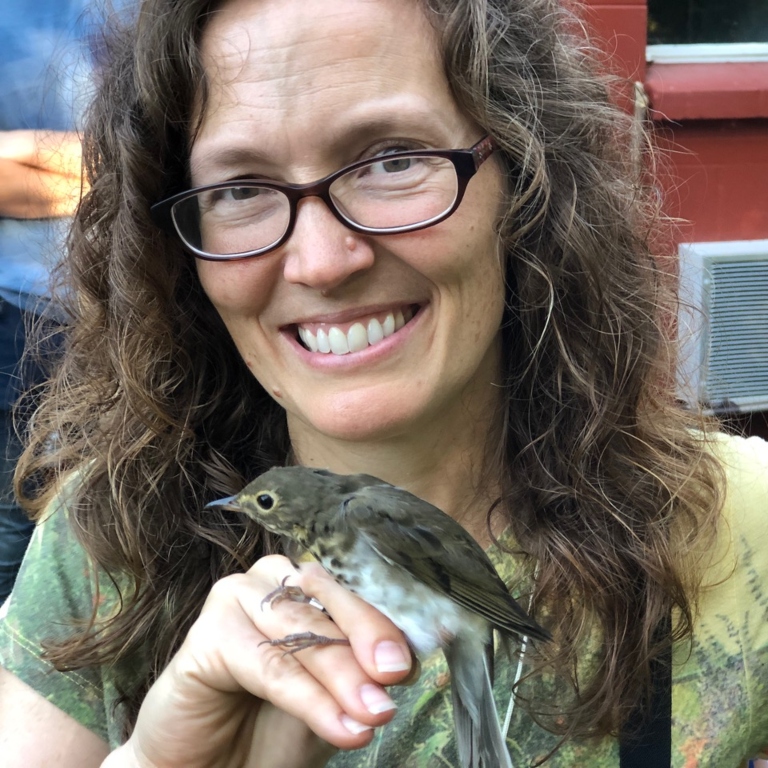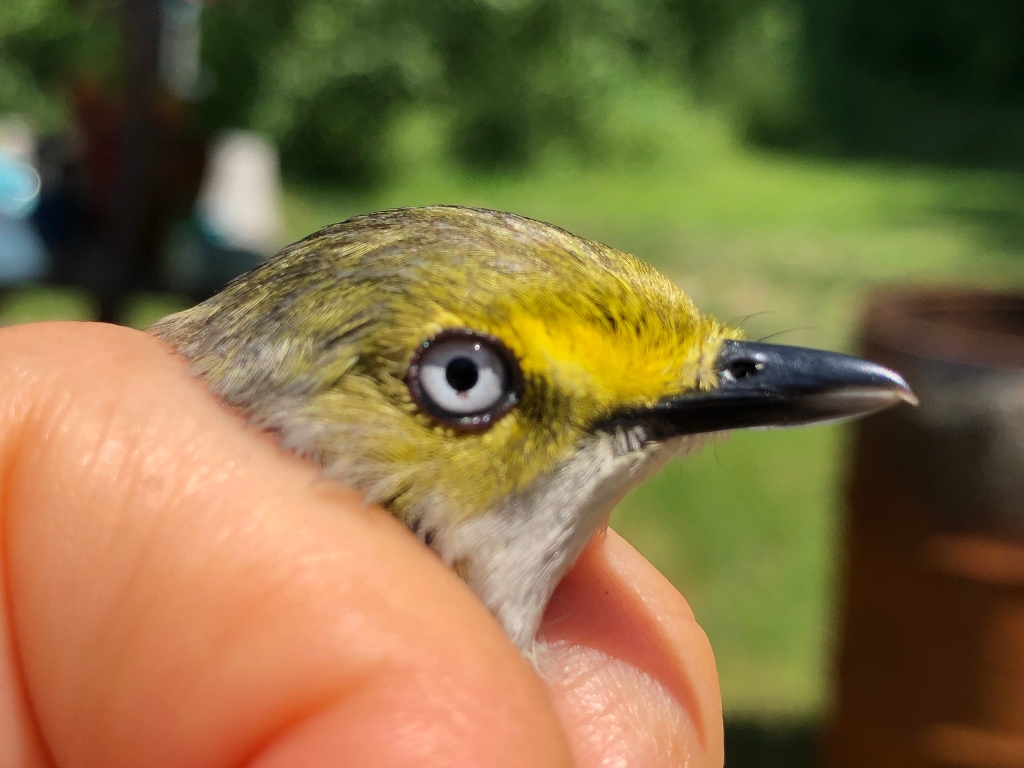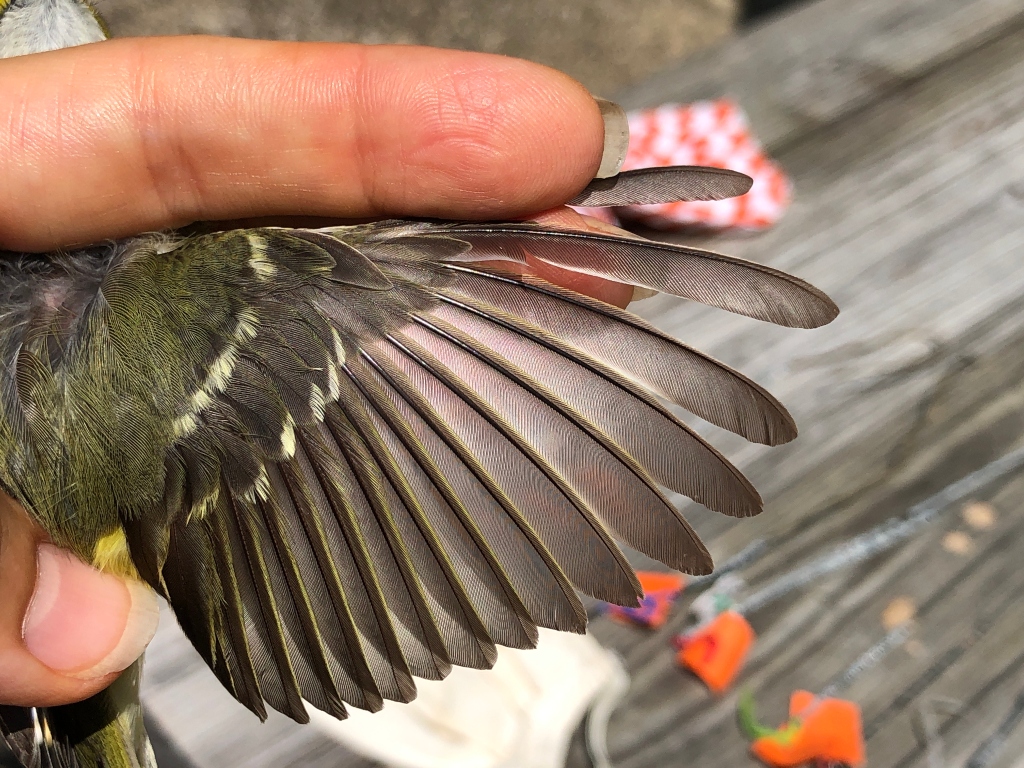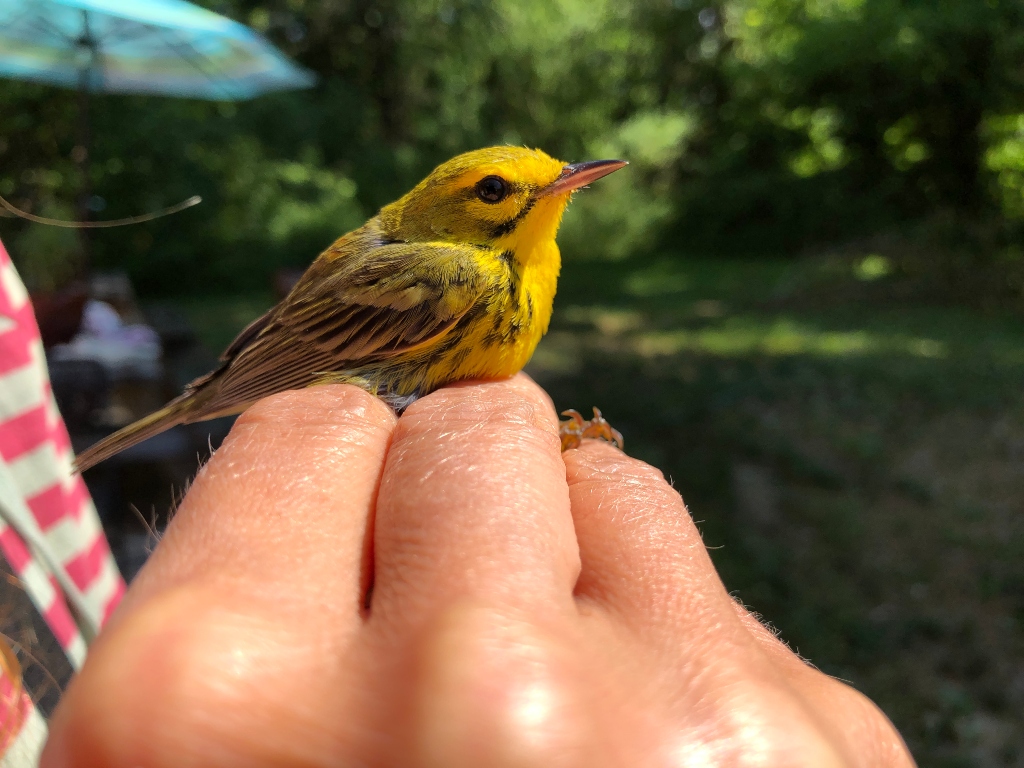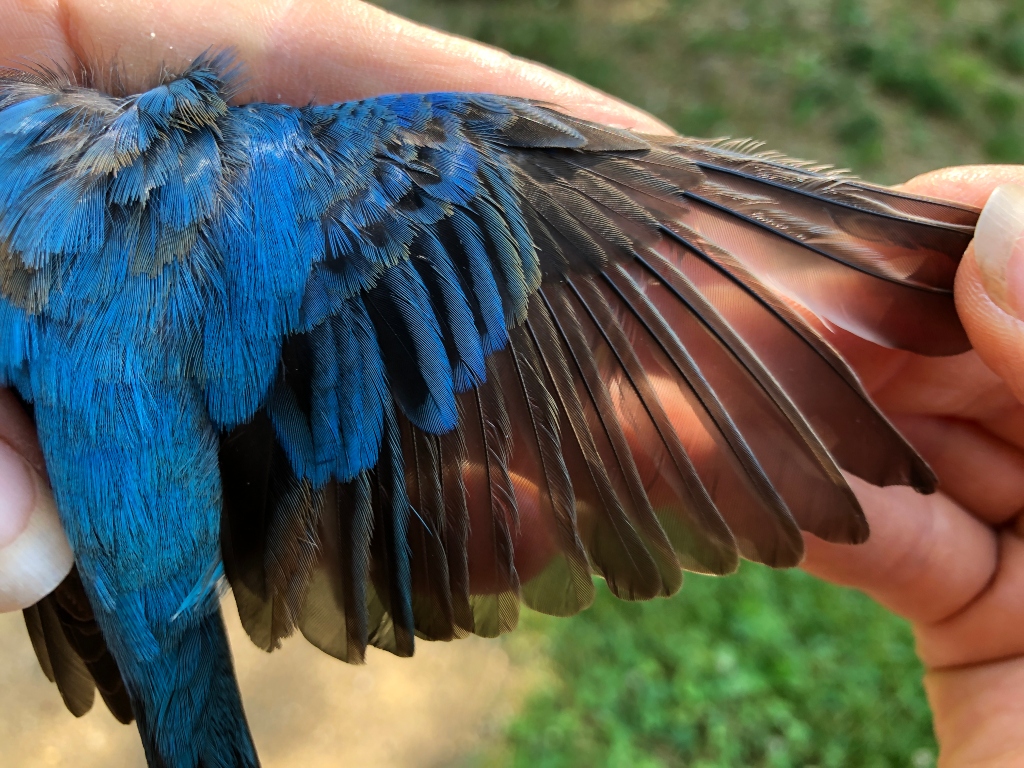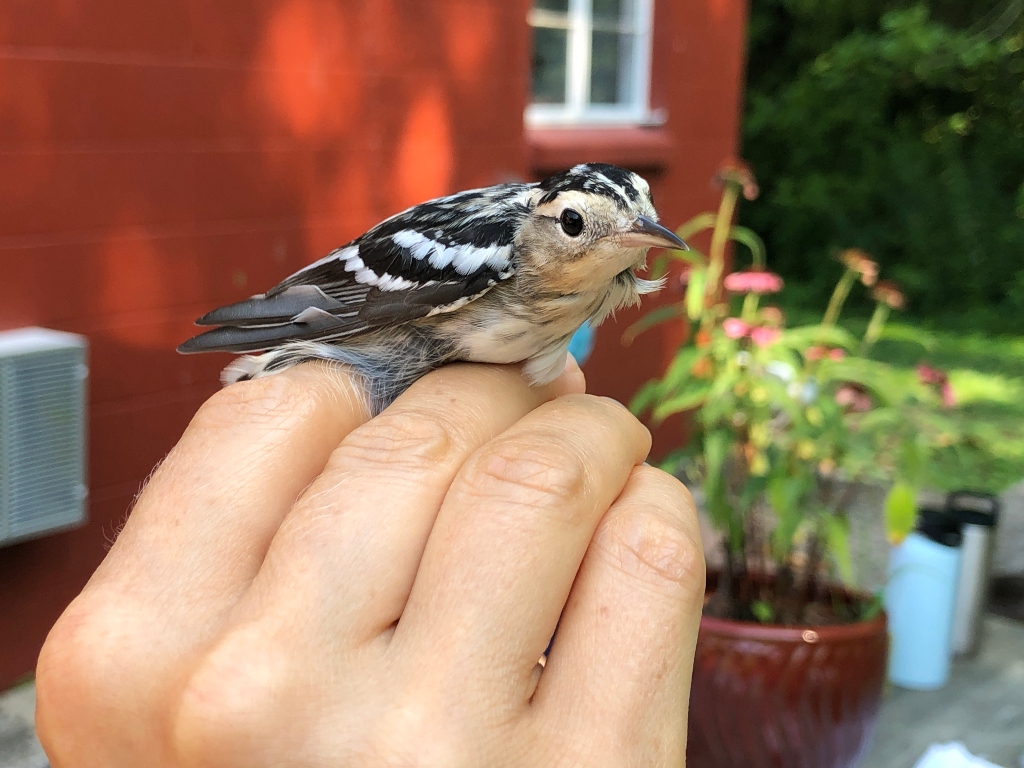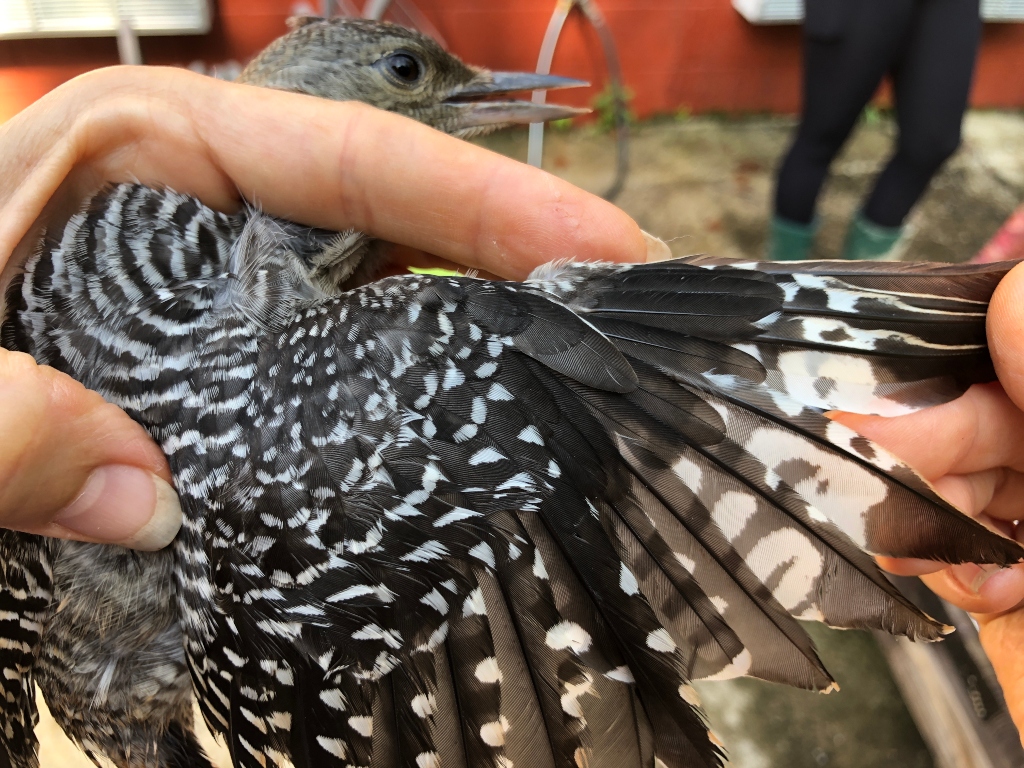This summer, Environmental Resilience Institute (ERI) researchers and citizen scientists at the Kent Farm Research Station east of Bloomington broke a noteworthy bird barrier, capturing their 1,000th avian specimen—a white-eyed vireo—in the name of science.
ERI affiliates have been capturing and banding birds at the station since 2017 as part of an international collaborative program called Monitoring Avian Productivity and Survivorship (MAPS). The demographic information recorded by the team helps inform large-scale studies on how environmental change is impacting bird populations over time.
“We knew we were getting close to 1,000, but it wasn’t until we were inputting the data that we realized we had actually netted our 1,000th bird at the station,” said Eve Cusack, one of the lead MAPS volunteers. With the help of ERI Founding Director and Science Advisor Ellen Ketterson, Cusack has been running the MAPS station at Kent Farm, along with her husband Sam, since the project’s inception.
To conduct the research, MAPS team members set up mist nets to capture the birds. Once a bird is caught, team members carefully remove the specimen, record its identifying measurements, band the bird or record its band, and release it back into the wild. The team members then send the data to the Institute for Bird Populations (IBP), the organization that coordinates MAPS.
“What is interesting is IBP will compare the data we have sent over all of our seasons,” said Cusack. “For instance, if there is a specific bird species I may have labeled differently in the past they will let me know and give me pointers on how I can improve. It is a really collaborative process that helps me get better at identifying birds while also providing reliable data.”
As of July 2020, the MAPS station at Kent Farm has banded 743 individual birds, meaning about 1 out of every 4 netted birds has been captured before. The station has banded around 40 different bird species, including the Prairie Warbler, Indigo Bunting, Black-and-white warbler, and Red-bellied Woodpecker.
In addition to the station’s scientific value, the site has also given visitors an up-close look at how bird research is conducted. Students, artists, nature enthusiasts, and others regularly observe and assist the Cusacks in their bird-banding sessions. The experience is an opportunity to learn about the services birds provide and the critical role they play in maintaining a healthy ecosystem.
“What makes this work so fascinating is that every time you go out, you don’t know what you can expect,” Cusack said. “It is a weekly reminder of how things can be right there that we are unaware of. By caring for our environment, we are caring for things that we might not know we are protecting.”


